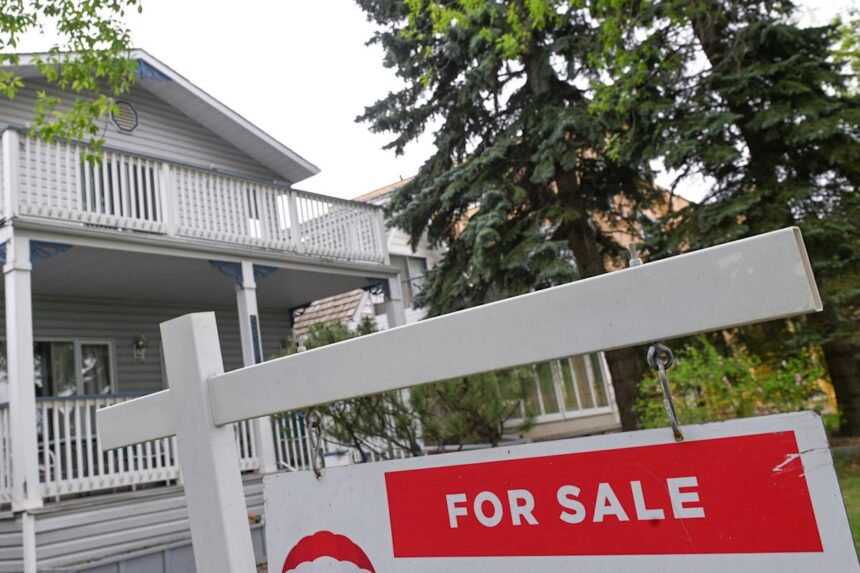Living the Canadian dream often evolves from condo convenience to the white-picket fence fantasy, but at what cost? The financial gap between condominiums and detached homes has widened dramatically across Canadian cities, creating what some analysts now call “the upgrade trap.”
The latest housing market data reveals that Canadian homeowners looking to trade their condos for houses face stark financial realities. In Toronto, the average price difference between condos and detached homes has surged to approximately $825,000 – effectively an additional mortgage for most families.
“We’re seeing a fundamental shift in the housing ladder,” explains Karim Bhaloo, chief economist at Heritage Wealth Partners. “What used to be a natural progression – condo to townhouse to detached home – has become financially impossible for many middle-income earners.”
The phenomenon is particularly pronounced in Canada’s largest urban centers. In Vancouver, the gap between the average condo and detached home exceeds $1.2 million, while Montreal homeowners face a more modest but still significant $450,000 premium for the transition.
This growing disparity stems from multiple market forces. Urban land values have appreciated at rates far outpacing inflation, with single-family plots becoming increasingly scarce commodities. Meanwhile, condo development continues at breakneck pace in most metropolitan areas, keeping apartment prices relatively more stable.
Market data from the Canadian Real Estate Association shows detached home prices increased by 42% over the past five years in major urban centers, while condos appreciated by just 27% during the same period. This widening gap places mounting pressure on young families seeking more space.
The situation has forced many Canadians to reconsider their housing trajectories entirely. Sarah and Michael Thompson, a Toronto couple with a two-year-old daughter, recently abandoned their house-hunting efforts after six months of disappointment.
“We bought our condo for $620,000 three years ago and thought we’d upgrade when we started a family,” Sarah explains. “But even with our combined incomes and the equity from our condo, we’re still $300,000 short for anything detached within an hour’s commute.”
The financial barriers extend beyond the purchase price. Property taxes, utilities, maintenance costs, and insurance premiums all scale dramatically with square footage and land ownership. According to Statistics Canada data, the average detached homeowner spends approximately $7,800 more annually on these expenses compared to condo dwellers.
For those determined to make the leap, financial experts suggest several strategies. “The traditional approach is to build equity in a starter home, but today’s market requires more creativity,” notes Priya Sharma, senior mortgage advisor at First National Financial.
Sharma recommends several approaches for aspiring house-owners: extending amortization periods to lower monthly payments, exploring multi-generational living arrangements where parents contribute to down payments, or considering further-flung suburbs and exurbs where price differentials are less extreme.
The suburban migration has accelerated during the pandemic, with cities like Hamilton, Barrie, and Kitchener-Waterloo absorbing many would-be Toronto upgraders. Similar patterns have emerged around Vancouver, with Fraser Valley communities seeing significant population growth.
However, these relocations come with their own financial considerations. “The house might be $400,000 cheaper in a satellite community, but you’re potentially adding thousands in annual transportation costs and hours of commuting time,” warns urban economist David Rosenberg.
Some families are finding alternative solutions within city limits. The renovated duplex market has surged as buyers seek house-like amenities without house-like prices. Others are exploring co-ownership arrangements, where multiple families purchase larger properties together.
Financial institutions have noticed this trend, with several major banks developing specialized mortgage products for co-ownership and multi-family dwellings. RBC Royal Bank recently launched its “Partnership Mortgage” product specifically designed for non-traditional ownership structures.
For young families currently in the condo market but dreaming of backyards, financial advisors suggest strategic planning. “Start with a realistic assessment of what that upgrade will cost five years from now, not just today,” advises Sharma. “Factor in potential interest rate changes, career trajectories, and family planning.”
The Canada Mortgage and Housing Corporation (CMHC) offers online calculators to help prospective upgraders understand the full financial picture, including closing costs, land transfer taxes, and ongoing maintenance expenses associated with larger properties.
The financial reality of housing upgrades also highlights broader questions about Canadian housing policy. Urban planning experts point to restrictive zoning laws that limit housing diversity in established neighborhoods. In most major cities, vast tracts of urban land remain exclusively zoned for single-family homes, preventing the development of more affordable “missing middle” housing options like triplexes and garden apartments.
Recent initiatives in Vancouver and Toronto have begun addressing these regulatory barriers, with both cities introducing policies to encourage gentle density through laneway housing, basement suites, and multi-unit conversions within traditional single-family neighborhoods.
For the average Canadian condo owner eyeing a house upgrade, the path forward requires careful financial planning, strategic timing, and often, geographic flexibility. The dream of more space remains achievable, but the route there has undoubtedly become more complex – and expensive – than previous generations experienced.
The housing ladder, once a predictable climb for middle-class Canadians, now resembles something closer to an economic high jump – with the bar rising higher each year.






